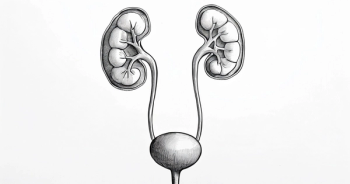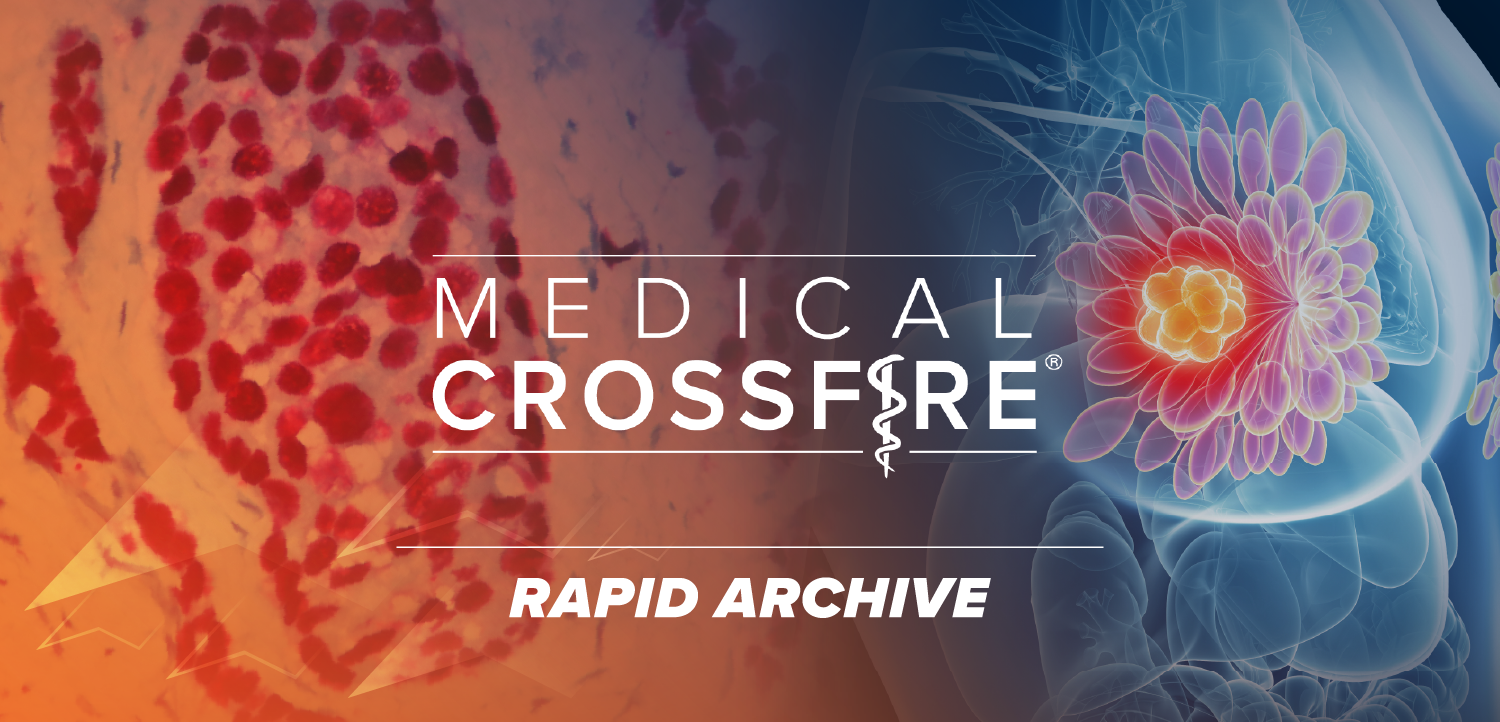
Targeted Therapies in Oncology
- April I 2025
- Volume 14
- Issue 5
- Pages: 16
Immunotherapy Inches Forward in Head and Neck Cancer Trials
The precise use of immunotherapy agents in locally advanced head and neck squamous cell carcinoma has not been clearly delineated, even in phase 3 trials.
Although immunotherapy has emerged as an important tool across many cancer settings, gaps in our knowledge about its optimal use remain. The precise use of immunotherapy agents in locally advanced head and neck squamous cell carcinoma (HNSCC) has not been clearly delineated, even in phase 3 trials. Investigators remain undaunted, however, and in the face of these shortcomings, emerging data may provide a greater understanding about timing and sequence of treatments that could eventually lead to optimal care.
Although the survival benefit was not pronounced for the phase 3 KEYNOTE-412 (NCT03040999) and JAVELIN Head and Neck 100 (NCT02952586) trials, both of which evaluated the addition of an anti–PD-1/PD-L1 antibody to chemoradiotherapy, investigators continued in their efforts to parse out useful data and seek clinical improvement. Overall, those trials, respectively, showed that the addition of pembrolizumab (Keytruda) or avelumab (Bavencio) to chemoradiotherapy in the neoadjuvant setting did not lead to a survival benefit in patients with locally advanced HNSCC.
“What those findings did lead to were many questions about those studies and the reasons that they might have failed,” Trisha Wise-Draper, MD, PhD, professor of medicine in the Division of Hematology/Oncology and section head of medical oncology at UCHealth, Ohio, said during an interview with Targeted Therapies in Oncology. “In particular, the timing and sequence of therapies were closely examined,” added Wise-Draper, who is also deputy director of the Office of Clinical Research and coleader for the Head and Neck Disease Group at the University of Cincinnati Cancer Center. The findings from JAVELIN Head and Neck 100 and KEYNOTE-412 left gaps in oncologists' understanding, and subsequent trials have tried to fill in those holes.
Adjuvant Setting
In the adjuvant setting, a phase 2 trial (NCT02777385) evaluating the addition of pembrolizumab to chemoradiotherapy sought to determine its optimal use with regard to concurrent or sequential order.1 In the study, patients with intermediate-risk human papillomavirus (HPV)–positive oropharyngeal or HPV-negative and previously untreated locally advanced HNSCC of the oropharynx, hypopharynx, larynx, or oral cavity were randomly assigned to receive chemoradiation and concurrent or sequential pembrolizumab at 200 mg every 3 weeks for a total of 8 doses.
Results showed that patients who received pembrolizumab in sequential order had a numerically superior 1- and 2-year progression-free survival (PFS) compared with those patients who received pembrolizumab concurrently. This approach could lead to improved outcomes in the adjuvant setting, but Wise-Draper added that further research is needed to confirm the findings.
Neoadjuvant Setting
In the neoadjuvant setting, trials that evaluated immunotherapy alone, immunotherapy plus either radiation and chemotherapy or radiation alone, have also been explored. The use of neoadjuvant and adjuvant pembrolizumab in resectable locally advanced, HPV-unrelated head and neck cancer was evaluated in a phase 2 trial (NCT02296684) by Uppaluri and colleagues.2 In this trial, investigators sought to determine whether pembrolizumab would be safe, lead to pathologic tumor response (pTR), and lower the relapse rate in patients.
Pembrolizumab at 200 mg was administered, and 2 to 3 weeks later, patients underwent surgical tumor ablation. Those patients with high-risk pathology, defined as positive margins or extranodal extension, were given adjuvant pembrolizumab.
The investigators explained that pTR was quantified based on the proportion of resected area that had tumor necrosis, keratinous debris, and giant cells/histiocytes. A pTR-0 was less than 10%, pTR-1 was between 10% and 49%, and pTR-2 was 50% or greater.
The study had 2 primary end points: pTR-2 among all patients and 1-year relapse rate in patients with high-risk pathology. A total of 36 patients were enrolled, and investigators reported that no serious adverse events, defined as grades 3 to 4, or unexpected surgical delays or complications occurred. Eight patients (22%) were pTR-2, and 8 other patients (22%) were determined to be pTR-1. The 1-year relapse rate among 18 patients with high-risk pathology was 16.7% (95% CI, 3.6%-41.4%).
The investigators concluded that among patients with locally advanced, HPV- unrelated HNSCC, pembrolizumab was safe, and no pathologic response was observed in 44% of patients with 0% pathologic complete responses. The 1-year relapse rate in patients with high-risk pathology was lower than historical data.
Wise-Draper and colleagues also evaluated pembrolizumab in the neoadjuvant and adjuvant setting in a phase 2 trial (NCT02641093).3 Patients with resectable, clinical stage T3 to T4 HNSCC were given 200 mg pembrolizumab prior to surgery. Patients were stratified by absence (intermediate risk) or presence (high risk) of positive margins and extracapsular nodal extension and received adjuvant radiotherapy and concurrent pembrolizumab. Those with high-risk HNSCC also received weekly, concurrent cisplatin. The primary end point was 1-year disease-free survival (DFS), and secondary end points were 1-year overall survival (OS) and pathologic response (PR).
A total of 92 patients were enrolled and 30% were female. At 1-year follow-up, the 1-year DFS rate was 97% (95% CI, 71%-90%) in the intermediate-risk group and 66% (95% CI, 55%-84%) in the high-risk group, according to investigators. Those with a PR had a significantly improved 1-year DFS rate relative to patients without a response (93% vs 72%; HR, 0.29; 95% CI, 11%-77%).
“Findings from those studies suggest that 1 dose alone could induce a pathological response in these patients, but 2 doses had a better response,” Wise-Draper said. “In addition, my study showed that if you had a pathological response that led to better survival outcomes, it was a better predictor than the usual risk factors we used for high-risk disease,” she added.
Overall, the studies were similar but differed in how patients in the adjuvant setting were evaluated. In the Uppaluri study, only patients at high risk received cisplatin and radiation plus pembrolizumab, whereas the Wise-Draper study evaluated both high- and intermediate-risk patients. “If patients were high risk, they received radiation, cisplatin, and pembrolizumab, but if they were intermediate risk, they only received radiation and immunotherapy based on the risk factors,” Wise-Draper said. “The findings showed that those in the intermediate-risk group had a significant increase in DFS, about 97% after 1-year follow-up compared with 65% to 68% historically,” Wise-Draper said. Based on these findings, the phase 3 KEYNOTE-689 (NCT03765918) study was developed,4 and the data are expected to be presented at an upcoming medical meeting.
KEYNOTE-689
In topline findings, for patients with resectable locally advanced HNSCC, the perioperative treatment regimen of pembrolizumab led to a statistically significant and clinically meaningful improvement in event-free survival compared with adjuvant radiotherapy (with or without cisplatin) alone.5,6 Early indications suggest that this “sandwiched” approach—neoadjuvant and adjuvant immunotherapy—could lead to a new standard of care for HNSCC.
A statistically significant improvement in major pathological response (mPR), a key secondary end point of the study, was also seen in the pembrolizumab arm vs in the adjuvant radiotherapy alone arm. These results served as the basis for a supplemental biologics license application for the agent.5,6
Another secondary end point, improvement in OS, was reported for pembrolizumab as neoadjuvant treatment and pembrolizumab in combination with standard-of-care radiotherapy (with or without cisplatin) as treatment after surgery and maintenance therapy with the agent.6 Investigators reported that the OS results did not reach statistical significance in patients whose PD-L1 combined positive score was 10 or greater.6
The study enrolled an estimated 704 patients. Some were randomly assigned to receive 200 mg pembrolizumab every 3 weeks before surgery followed by either pembrolizumab plus standard-of-care radiotherapy with cisplatin as adjuvant therapy following surgery in patients at high risk or pembrolizumab plus standard-of-care radiotherapy without cisplatin as adjuvant therapy following surgery for low-risk patients.
Others received no neoadjuvant therapy before surgery, followed by either standard-of-care radiotherapy with cisplatin as adjuvant therapy following surgery for high-risk patients or standard-of-care radiotherapy without cisplatin as adjuvant therapy following surgery for low-risk patients.
GORTEC
Questions remain, however. Wise-Draper emphasized the need to determine whether the neoadjuvant, adjuvant, or both phases of treatment are driving the improved outcomes.
“We don’t know, because of the study design, which approach is actually important,” Wise-Draper said. But maybe the results of the GORTEC study can bring some clarity.
“The GORTEC study looked at the same patient population, but the investigators did not give neoadjuvant therapy; they only gave adjuvant nivolumab [Opdivo]. In that study, they also reported increased disease-free survival,” Wise-Draper said.
The Head and Neck Radiation Oncology Group, GORTEC, evaluated nivolumab as a postoperative treatment component for resected patients with locally advanced HNSCC in an open-label phase 3 trial (NCT03576417).7
The study evaluated the addition of nivolumab to standard-of-care (SOC) radiotherapy and cisplatin post surgery, compared with SOC radiotherapy and cisplatin alone. At a predetermined number of DFS events, there was a statistically significant and clinically meaningful improvement in DFS for patients receiving nivolumab.7 The study enrolled 680 patients who were randomly assigned after surgery to receive either SOC 66-Gy radiotherapy and cisplatin or nivolumab, followed by SOC cisplatin-radiotherapy with nivolumab during cisplatin-radiotherapy and followed by 6 cycles of nivolumab 480 g every 4 weeks.
Camrelizumab
Another phase 2 trial in the neoadjuvant setting evaluated chemotherapy combined with the PD-1 inhibitor camrelizumab in patients with locally advanced HSNCC.8 T he single-arm study evaluated patients with resectable stage III-IVB disease who received chemotherapy (paclitaxel plus cisplatin) and 200 mg camrelizumab followed by surgery and adjuvant radiotherapy. Co–primary end points were pathologic complete response (pCR) rate and safety.8
In the study, 30 patients enrolled and completed neoadjuvant therapy and had an objective response rate (ORR) of 96.7%. The pCR rate was 37.0% (95% CI, 19.4%-57.6%), and the mPR rate was 74.1% (95% CI, 53.7%88.9%). Further, the median follow-up duration was 16.1 months (range, 8.3-28.5), and at 12 months, the disease-free rate was 95.8% (95% CI, 73.9%-99.4%).8
The investigators concluded that the high ORR, pCR, and mPR rates merited further study of the regimen.8 These trials suggest researchers are on the right path, but Wise-Draper sees the need for further delineation.
“We need to determine the benefit of the neoadjuvant vs adjuvant approach. I think the FDA is going to require clarification before approvals are granted,” Wise-Draper said. “But the other big question is, What is the role of pathological response? Is it important?” she asked.
A key question in the field is whether the pathological response observed in neoadjuvant studies is a critical factor in improving survival. If so, researchers may explore combining immunotherapy with other treatments in the induction phase to enhance this response. Wise-Draper highlighted ongoing studies investigating the use of stereotactic body radiation therapy combined with immunotherapy before surgery. This approach, inspired by similar strategies in rectal cancer, aims to induce a stronger immune response by targeting the tumor more precisely.
Wise-Draper highlighted another phase 2 trial (NCT04826679) that evaluated neoadjuvant chemoimmunotherapy combined with camrelizumab plus nab-paclitaxel and cisplatin in patients with resectable locally advanced HNSCC.9 The primary end point was ORR. Secondary end points included pCR, mPR, 2-year PFS rate, 2-year OS rate, and toxicities.
The ORR was 89.6% (95% CI, 80.9%-98.2%) among 48 patients who completed neoadjuvant therapy. Of the 27 patients who underwent surgery, 17 (63.0%; 95% CI, 44.7%-81.2%) achieved mPR or pCR, with a pCR rate of 55.6% (95% CI, 36.8%-74.3%).
“The investigators showed an 89% response rate, which sounds fantastic. But if you review historical data for induction studies, where only chemotherapy was used, it becomes apparent that the findings did not impact OS,” Wise-Draper said. “We know that chemotherapy works; we know it causes a response. The question now is, Is this response different because we’re giving it before surgery?” Wise-Draper asked.
For the Community Oncologist
Wise-Draper’s current research focus is on determining why some patients do not respond to immunotherapy. “We’re revisiting that [phase 2] trial [NCT02641093]. We’re starting to see some different immune types that could potentially be targetable,” she said.
Wise-Draper acknowledged that understanding of the disease is at an interesting point. “Outside of the recurrent and metastatic setting, where we have clear indications about when to give immunotherapy, I think it’s still too early to give it in the definitive setting,” Wise-Draper said. “I’d wait until we have a little bit more information, especially with giving immunotherapy before surgery, until we have the results from the clinical trial.”
Head and neck cancer treatment is at a pivotal moment, with immunotherapy poised to revolutionize standard care. Although questions remain about the optimal timing and combination of treatments, the progress made in recent years offers hope for improved survival and quality of life for patients. For now, the message to clinicians is clear: Stay tuned. The data from KEYNOTE- 689, GORTEC, and other trials will provide critical insights into how best to integrate immunotherapy into the treatment of head and neck cancer, potentially ushering in a new era of care.











































